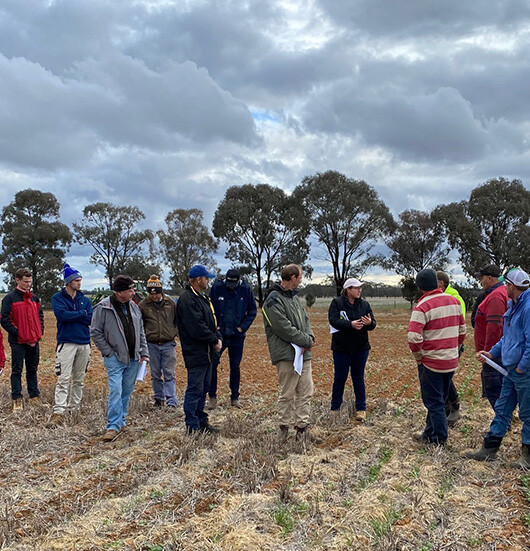Innovation Uptake Case Study with Curt Severin
How technology can be used to identify and mitigate a problem in a farming system.

Publication date
22 Nov 2022
Publication partner
This publication was supported by the Cool Soil Initiative and AgriFutures Australia.
LEARN ABOUT SUBSURFACE ACIDITY ISSUES AND HOW TECHNOLOGY CAN HELP IDENTIFY AND MITIGATE THIS PROBLEM
This case study showcases how Curt Severin, from Brocklesby, used variable rate technology to apply lime on his farm following the identification of a soil acidity issue.
Through his involvement in the Cool Soil Initiative and GRDC’s Hyper Yielding Crops project, Curt was able to employ various forms of technology and knowledge to firstly quantify the problem, and then implement and evaluate a solution. Curt compared two different treatments for the application of lime on the paddock, and measured the performance of each treatment.
Key messages
- Find the right people to help investigate your issues and explore potential solutions. For example, if you have a soil problem, consult with a soil scientist.
- Look at the data available to you, such as NDVIs and yield maps, to identify poor areas in a paddock over a number of years. Talk to someone who is experienced in interpreting the information.
- Find out why a paddock is not performing by looking into possibilities such as disease, pests, soil types or soil issue.
- If it is a soil issue, try and test segmented samples to depth in the poor areas (0-5cm, 5-10cm, 10-15cm, 15-20cm), and compare them to the good areas.
- Based on the results of the segmented soil tests, determine how to do the soil mapping (such as 0-10cm, or 10-20cm).
- Use soil mapping, with the help of advisors, to work out a strategy to fix the problem. Once you have implemented the strategy, follow up with relevant data to measure how well it worked.
- Follow up with long-term monitoring of the site.
NEWS
Discover unique perspectives on agriculture from across the Riverine Plains.
-
Livestock
-
People
-
Grains
-
Sustainability

